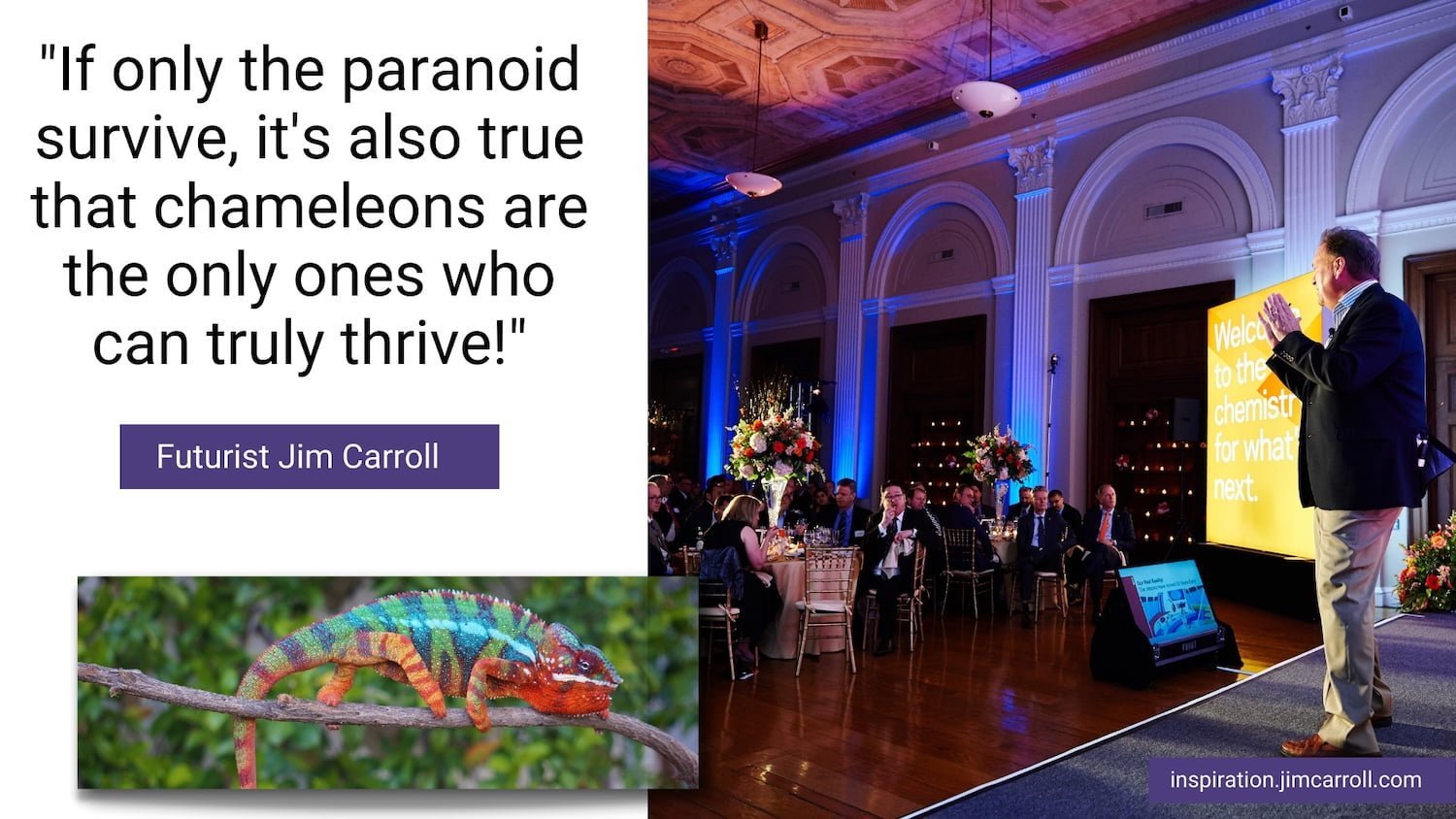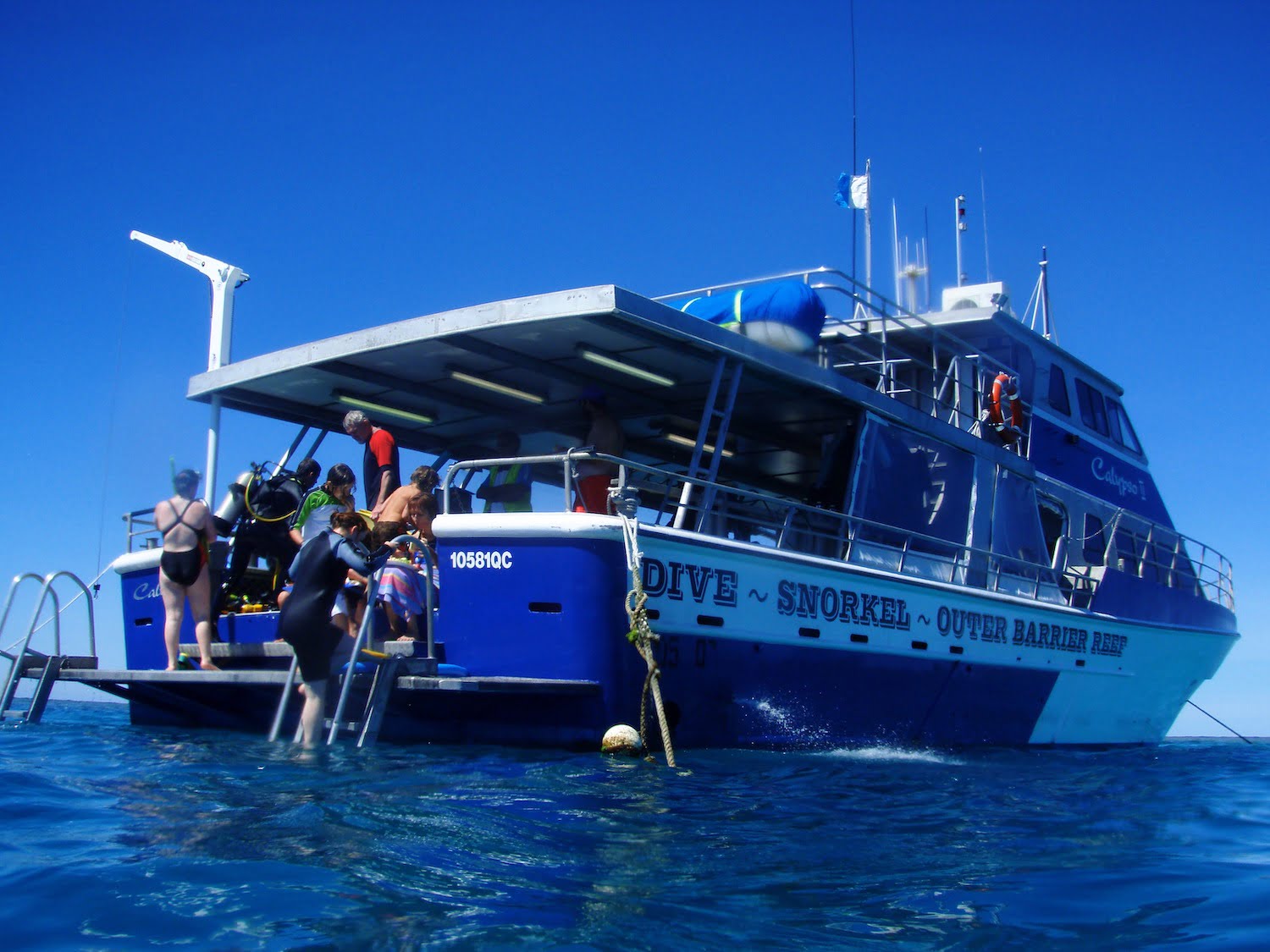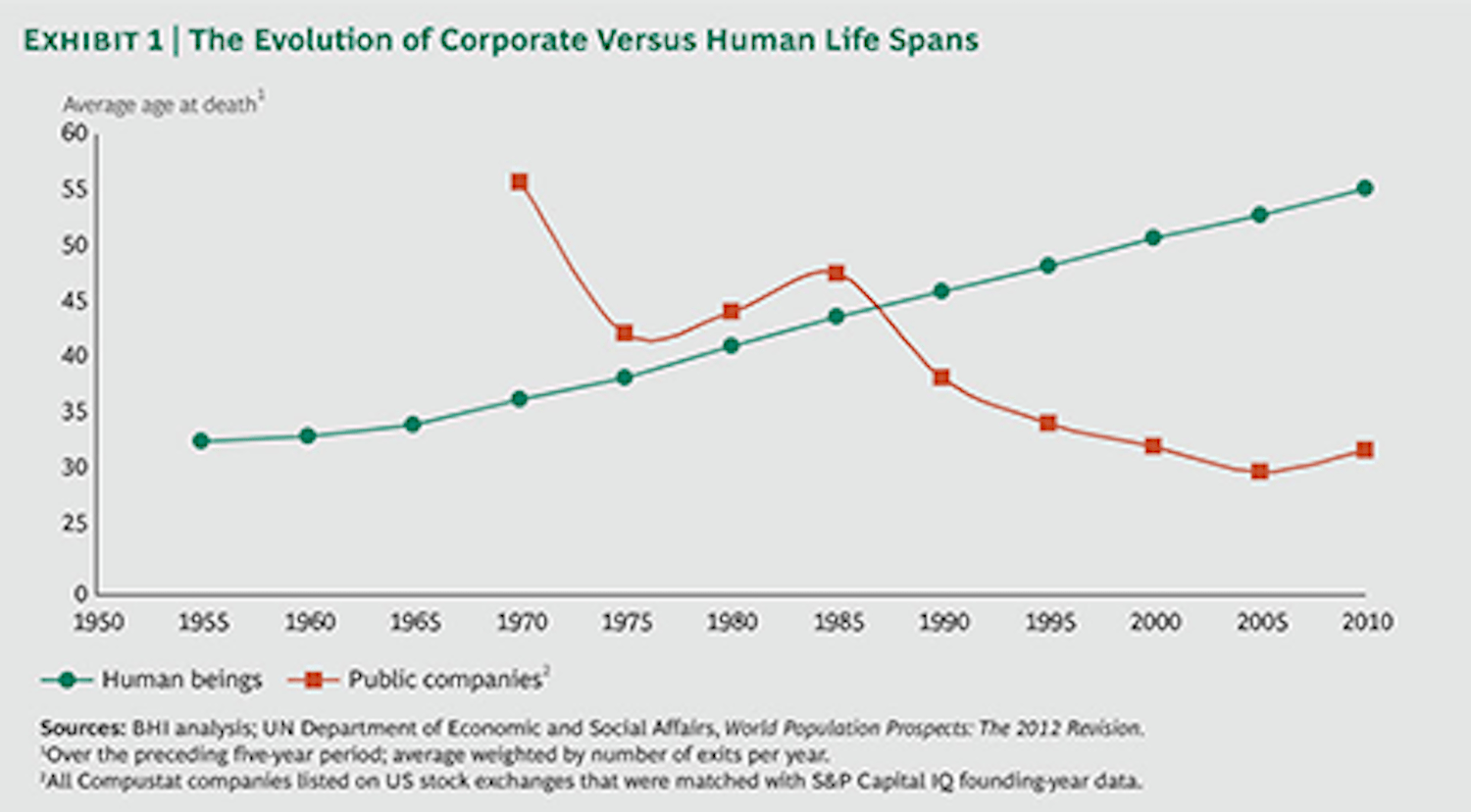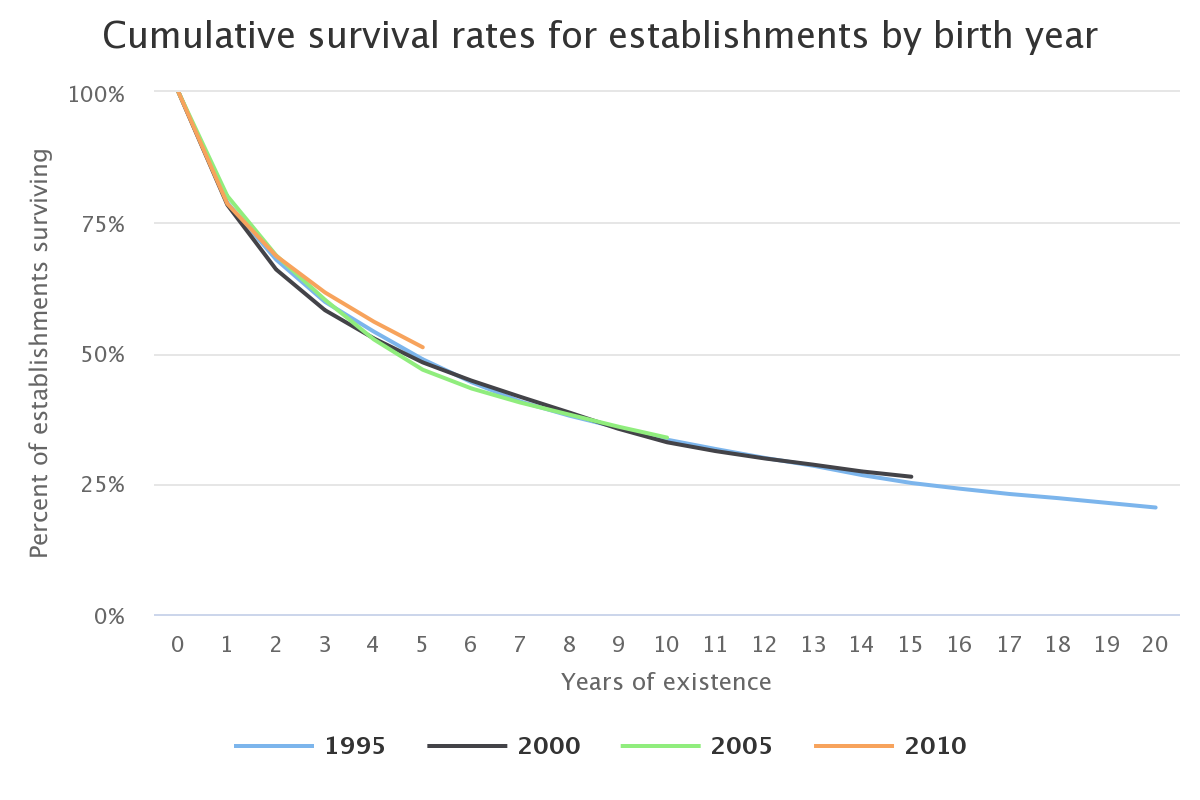“If only the paranoid survive, it’s also true that it’s the chameleons who will thrive!” – Futurist Jim Carroll

Here’s a story about innovation and adaptability. To be a chameleon – to change with the circumstances, adapt, evolve, and reinvent.
Back in 2008, Toshiba Australia invited me to open their annual technology conference in Sydney – it was a pretty wonderful engagement! My wife and I decided this would be a fantastic opportunity for a family trip and so so took our 13 and 15-year-old sons along with us on a 3-week adventure.
We eventually made our way up to a wonderful community on the east coast south of the popular tourist spot of Cairns – Mission Beach. A glorious beach, a beautiful community, and very few tourists. Naturally, we wanted to take an excursion out to the Great Barrier Reef to snorkel. Venturing into town, we made our way to see the long-established dive company that was listed in all the local brochures, yet their small ramshackle office in the touristy part of town was closed. It was Saturday! We phoned the number listed on the door – and they advised us that they did not go out on Sundays – our only available day. (It was off-season, August in Australia, and so things were somewhat slow).
They were rather gruff and abrupt about it – not your typical Australian warmth.
Bummed out, we thought our opportunity within our short window of time would mean that our chance to get to the reef would be over. We then ventured to the local Woolworths’ to stock up on some supplies.

There in the lobby was a small table for another local dive company – apparently, a new young upstart breaking into the market. “We don’t have anything organized for Sunday, mate!” they said. “But let’s see if we can organize something if we can find a few more people!” In 30 minutes, while we did our grocery shopping, they committed to taking us out the next day. What a glorious time we had!

Here’s what I learned from this circumstance. Long-established, old companies can become stuck in their routine and can miss out on opportunities by not adapting and changing. New, fast-moving companies that can react quickly win those same opportunities.
I will never forget this moment and this lesson.
I don’t know if the old, original dive boat company is still around – I couldn’t find them on the Internet. But the other new young upstart is – Calypso Reef Cruises!
That’s how things need to be done in this new fast and complicated age. Adapt, change, move fast, innovate, and change things! If there is an established routine, break it! If there is an order, mess it up! If things are always done one way, also try another way! I often think about the difference between these two dive companies, and know that this applies to an observation I often use on stage: “Adapt – or die.”
It ties into a key lesson I’ve long shared: Be a chameleon – change it up according to the current circumstances.
Why is this important? Adaptability goes to the heart of corporate longevity – a topic I wrote about yesterday – and the simple fact is, while the overall human life span is increasing, corporate life span is decreasing.

Here’s a stark statistic: according to the U.S. Small Business Administration, only 44 percent of startup businesses with at least one employee survive four years. Small businesses fail all the time – the average lifespan is about eight and a half years. The longer you are in business, the less likely you are to survive.

The same thing happens to big businesses. As I noted yesterday, corporate longevity for publicly traded companies is decreasing. In 2020, the average lifespan of a company on the Standard and Poor’s 500 Index was just over 21 years, compared with 32 years in 1965. There is a clear long-term trend of declining corporate longevity with regard to companies on the S&P 500 Index, with this expected to fall even further throughout the 2020s.
Here’s a simple list of companies that were once great successes. Then they weren’t: Blockbuster. Borders. Lehman Bros. Kodak. Circuit City. RadioShack. Pan-Am. Enron. E.F. Hutton.RCA. Tower Records. Polaroid. Woolworths. Compaq. Arthur Anderson.
The list could go on…. companies that were leaders in their time, and then failed, due to a lack of innovation; a failure to adapt; or other factors that could have been avoided. What happens? Complacency comes with age.
Every new venture that survives the first five years starts to drift away from its entrepreneurial thinking, and assumes it has achieved the path to longevity. In fact, even within Fortune 100 companies, almost 90 percent have encountered growth stalls or flirted with failure, or worse, in the last 50 years. No company can afford to lose the agility, flexibility, and innovation of a startup.
As firms’ lifespans shorten, investor vigilance is key
22 May 2017, New Indian Express
In the next 10 years, we will see a number of established companies added to the list. Right now, some of them could be making decisions to avoid that fate.
Disruption and innovation means average lifespan of companies is shrinking and this calls for change in strategies, organizational models and courageous leadership.
As firms’ lifespans shorten, investor vigilance is key
22 May 2017, New Indian Express
So what do you do? Evolve. Pivot. Innovate. Disrupt. Whatever you want to call it, you must change over time, and never become complacent! Open on Sundays and organize a snorkel tour at the last minute if you have to! There is always someone there with a better idea to get you out to the reef – there is always someone there who will work harder to get your business. There are always those at the top who become complacent – but new young upstarts don’t think like that.
That’s why trying to stay at the top is arguably just as important as the effort in getting there.
And in doing so, think about being a chameleon. The photo used in today’s quote is from a keynote I did a few years ago for Chemours, the global chemicals company, where I talked about the idea of being a chameleon on stage. In the room were dozens of CEOs of numerous key clients, and I was emphasizing to them the idea of continual reinvention. The idea of what I call ‘chameleon revenue.’
Here’s a clip in which I describe the concept.
Chameleon revenue? Here’s a post I wrote 15 years ago about the concept.
The key point:
This ability to respond quickly to change is a corner-stone of opportunity. Competitors will emerge, particularly as the new connected generation rejects existing business models and innovative people continue to shake up the fundamentals.
I recently spoke at a leadership meeting for a global organization, where the CEO spoke of a future in which the company’s success would come from what he called “chameleon revenue” – the sales derived from entirely new product lines. The chart he presented said it all: the organization’s future consisted of a steady decrease in baseline revenue and accelerating revenue streams from markets it currently does not participate in.
I think this will become the norm for most organizations. The ability to rapidly enter and exit markets will define future success. The ability to sustain multiple, short-term product life cycles, each perhaps no more than 36 to 48 months long, will be a critical success factor. Agility at discovering, producing and capitalizing on new revenue sources will be a fundamental necessity. In other words, your ability to change your spots and your colour on a dime will be the key driver for your potential.
Listen to your customers. Your customer’s businesses will change, and your business needs to change with it.
Adapt, or die.
Get out to the reef if your customers want you to.
What will you do to ensure your business lives past the next 5 years?




GET IN TOUCH
Jim's Facebook page
You'll find Jim's latest videos on Youtube
Mastodon. What's on Jim's mind? Check his feed!
LinkedIn - reach out to Jim for a professional connection!
Flickr! Get inspired! A massive archive of all of Jim's daily inspirational quotes!
Instagram - the home for Jim's motivational mind!